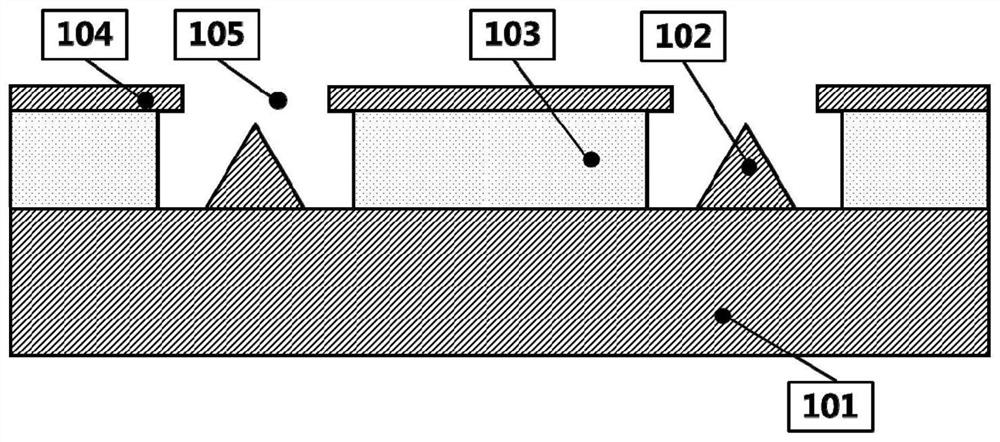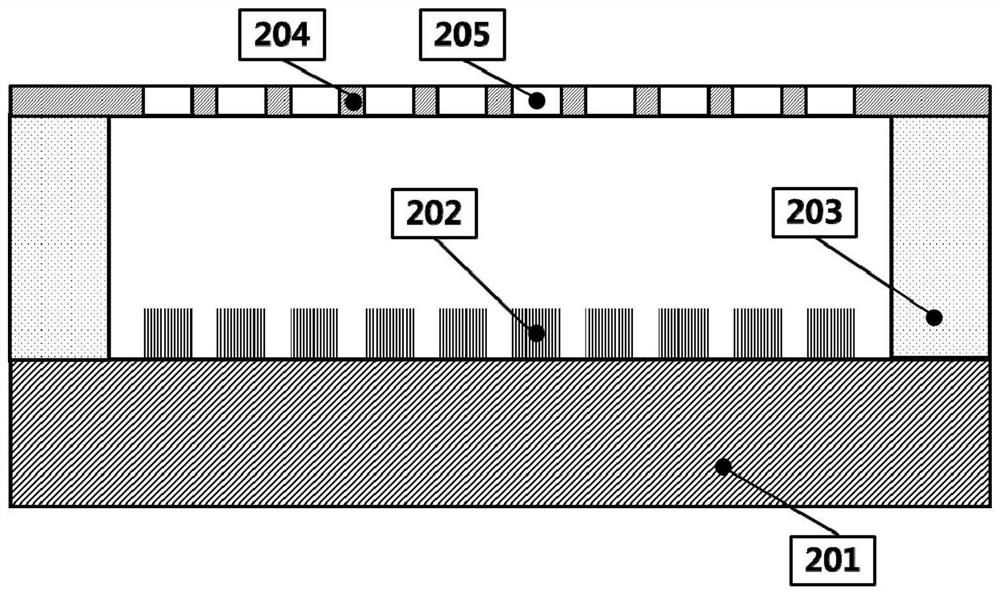Field emission cathode ultra-thin refractory metal grid mesh and preparation method thereof
A field emission cathode and refractory metal technology, which is applied in cold cathode manufacturing, electrode system manufacturing, discharge tube/lamp manufacturing, etc., and can solve problems such as cathode refractory metal grids
- Summary
- Abstract
- Description
- Claims
- Application Information
AI Technical Summary
Problems solved by technology
Method used
Image
Examples
Embodiment 1
[0058] Such as image 3 As shown, the present embodiment provides a field emission cathode ultra-thin refractory metal grid 300, which includes: a grid substrate 307, including a grid through-hole array 309 in the central area of the grid substrate 307; the grid The support ring 308 is located on the grid substrate 307, and the two are welded together; wherein, the material of the grid substrate 307 is refractory metal.
[0059] Exemplary, refractory metals suitable for the grid substrate 307 in this embodiment include but are not limited to tungsten, molybdenum, tantalum, etc., and molybdenum is preferred in this embodiment.
[0060] In this embodiment, the thickness of the grid substrate 307 ranges from 40 micrometers to 5 micrometers according to different frequency bands of millimeter wave and terahertz devices. Exemplary thicknesses include, but are not limited to, 35 microns to 5 microns, 35 microns to 10 microns, 35 microns to 15 microns, 35 microns to 20 microns, 30...
Embodiment 2
[0088] Repeat Example 1, the difference is that in step 2), the pattern of photoresist 304 formed by exposure and development is a square column, with a side length of 80 microns, and a distance of 10 microns between each column; in step 3), photoetching The silicon device layer 303 forms a silicon mold 305 pattern that is a square column, with a side length of 80 microns and a distance of 10 microns between each column. Other conditions remain unchanged. The result of the grid 300 obtained in this embodiment is similar to that of Example 1, the difference is that the grid The extremely transparent array hole 309 is a square hole array with a light transmittance of 80%.
Embodiment 3
[0090] Repeat Example 1, the difference is that in step 1), the thickness of the silicon device layer 303 is changed to 12 microns; in step 4), the thickness of the gate deposition layer 306 is changed to 13 microns; The layer 306 / silicon mold 305 mixed layer grinding thickness is changed to 11 microns, the polishing thickness is changed to 10 microns, and other conditions remain unchanged. The result of the grid 300 obtained in this embodiment is similar to that of Example 1, and the difference is the thickness of the grid substrate 307. to 10 microns.
[0091] The method of the present invention breaks through the limitation that the conventional laser processing or photolithographic etching method can only realize grids with a thickness exceeding 50 microns, and the UV-LIGA process can only make electroplating-related metal materials, and can realize any thickness within the range of 5-50 microns ( For example, the ultra-thin refractory metal grid of 5-20 microns), and the ...
PUM
| Property | Measurement | Unit |
|---|---|---|
| thickness | aaaaa | aaaaa |
| thickness | aaaaa | aaaaa |
| thickness | aaaaa | aaaaa |
Abstract
Description
Claims
Application Information
 Login to View More
Login to View More - R&D
- Intellectual Property
- Life Sciences
- Materials
- Tech Scout
- Unparalleled Data Quality
- Higher Quality Content
- 60% Fewer Hallucinations
Browse by: Latest US Patents, China's latest patents, Technical Efficacy Thesaurus, Application Domain, Technology Topic, Popular Technical Reports.
© 2025 PatSnap. All rights reserved.Legal|Privacy policy|Modern Slavery Act Transparency Statement|Sitemap|About US| Contact US: help@patsnap.com



